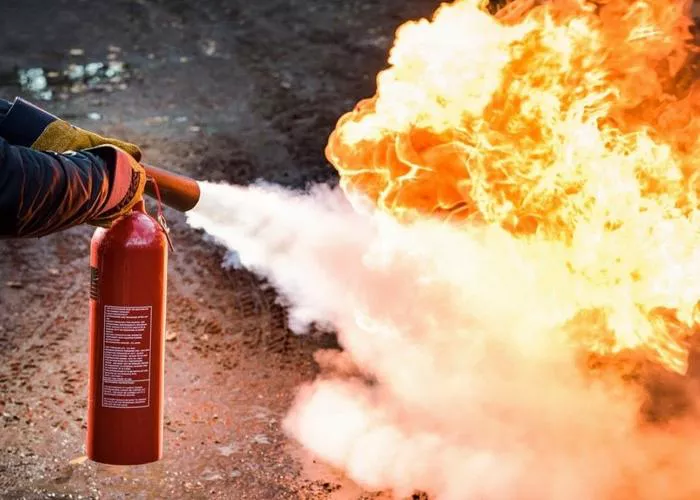Fire extinguishers are vital for safety in both residential and industrial settings. While many extinguishers come equipped with pressure gauges, not all do. Understanding which types lack these gauges is crucial for choosing the correct extinguisher and ensuring readiness during emergencies.
A pressure gauge indicates the internal pressure of the extinguisher. Typically found on stored-pressure extinguishers, these gauges help users determine whether the extinguisher is within the operable range. However, some extinguishers use different technology and storage mechanisms that do not require or support such gauges.
Why Some Fire Extinguishers Don’t Have Pressure Gauges
Several factors influence the absence of pressure gauges on specific fire extinguisher types:
- Design mechanism (cartridge-operated vs. stored-pressure)
- Type of extinguishing agent
- Safety protocols and intended use environment
- Maintenance and inspection standards
To understand the details, we’ll look at several extinguisher types and their engineering principles.
Fire Extinguishers Without Pressure Gauges
1. CO2 (Carbon Dioxide) Fire Extinguishers
CO2 extinguishers are among the most common types that do not come with a pressure gauge. These extinguishers are high-pressure, liquefied gas cylinders that discharge CO2 directly through a nozzle. Since the CO2 is kept in liquid form under pressure, checking its weight is the standard way to assess its fill level, not pressure monitoring.
2. Cartridge-Operated Dry Chemical Extinguishers
These extinguishers separate the propellant (typically nitrogen or CO2) from the extinguishing agent. When activated, the internal cartridge releases the gas, pressurizing the cylinder and discharging the agent. Because the pressure is not constant before use, no gauge is needed. Learn more about Dry Chemical Fire Extinguishers.
3. Water Mist Fire Extinguishers
Water Mist Fire Extinguishers are designed for sensitive environments such as hospitals or server rooms. Many models use a stored-pressure design, but some portable units, especially those with disposable cartridges, do not include pressure gauges.
4. Clean Agent Fire Extinguishers
Depending on the model and agent type (e.g., Halotron, FE-36), Clean Agent Fire Extinguishers may or may not include gauges. Larger wheeled units or those for specialized environments often use pressure-checking tools other than gauges for safety and performance validation.
5. Class D Fire Extinguishers
Specialized for combustible metals like magnesium or sodium, Class D Fire Extinguishers are often cartridge-operated and designed without pressure gauges. These extinguishers prioritize containment and specific delivery methods over pressure monitoring.
How to Inspect Fire Extinguishers Without Gauges
Weight-Based Inspection
Many extinguishers without gauges, such as CO2 types, require regular weighing to determine if the content is still intact. A drop in weight signifies a leak or partial discharge.
Maintenance and Hydrostatic Testing
Extinguishers without gauges must undergo routine maintenance and hydrostatic testing to verify cylinder integrity. These tests ensure the extinguisher will function correctly when needed, despite the lack of a visual pressure indicator.
Cartridge Check
For cartridge-operated models, the condition of the propellant cartridge must be inspected. This involves checking the sealing mechanism, expiration date, and replacing used or expired cartridges.
Instrumentation and Engineering Principles Behind Gauge-Free Designs
Instrumentation plays a crucial role in the design of modern safety equipment. In pressure gauge applications, a variety of designs exist, such as the bourdon tube pressure gauge or the capsule pressure gauge. However, in systems where internal pressure is either irrelevant before activation or controlled by a separate mechanism, these devices are excluded.
Advantages and Disadvantages of Fire Extinguishers Without Gauges
Advantages
- Reduced risk of gauge failure or misreading
- Minimal external components increase ruggedness
- Often more compact and portable
- Less frequent false alarms from pressure variations
Disadvantages
- Requires more technical inspection methods (e.g., weighing)
- No quick visual pressure check for untrained users
- Can lead to underestimation of maintenance needs
When to Choose a Fire Extinguisher Without a Gauge
Gauge-free extinguishers are often preferred in environments where:
- Temperature and pressure variations could cause false readings
- Minimal maintenance is a priority
- Specialized suppression agents are needed
For example, Class A Fire Extinguishers used in basic fire scenarios often come with gauges. In contrast, CO2 or cartridge-operated extinguishers used in industrial or technical environments may omit them entirely due to system design and usage expectations.
Conclusion
Fire extinguishers without pressure gauges are specifically designed for unique environments and use cases. Their functionality is not compromised by the lack of a gauge; instead, their design aligns with practical, safety, and performance requirements. Understanding the engineering rationale and maintenance needs of these units helps ensure they are always ready when emergencies arise.
Whether you’re managing fire safety in a commercial kitchen or an industrial facility, knowing your extinguisher’s design is key to effective fire suppression. Regular maintenance and awareness replace the need for gauges in these systems, making them reliable and efficient for the tasks they are built to handle.
FAQs
Q1: Why don’t CO2 fire extinguishers have a pressure gauge?
CO2 extinguishers operate under high pressure using liquefied gas. Instead of using a gauge, their readiness is measured by weight. Pressure would not vary predictably with gas volume, making a gauge misleading.
Q2: Can extinguishers without gauges be safely used in homes?
Yes, but they require additional awareness. Homeowners should understand how to weigh or otherwise inspect their extinguishers to ensure they are full and operational.
Q3: What is the best maintenance method for a gauge-less fire extinguisher?
Regular weighing, cartridge replacement (if applicable), and periodic professional inspections or hydrostatic testing are essential to ensure proper function.
Q4: Are pressure gauges necessary for all fire extinguishers?
No. Pressure gauges are useful but not essential for all extinguisher types. Cartridge-operated and CO2 extinguishers, for example, are designed to function without them.
Q5: How can I tell if a cartridge-operated extinguisher is full?
You can check the propellant cartridge for damage, expiration, and proper sealing. Some units have an indicator window, but professional servicing is the most reliable method.

